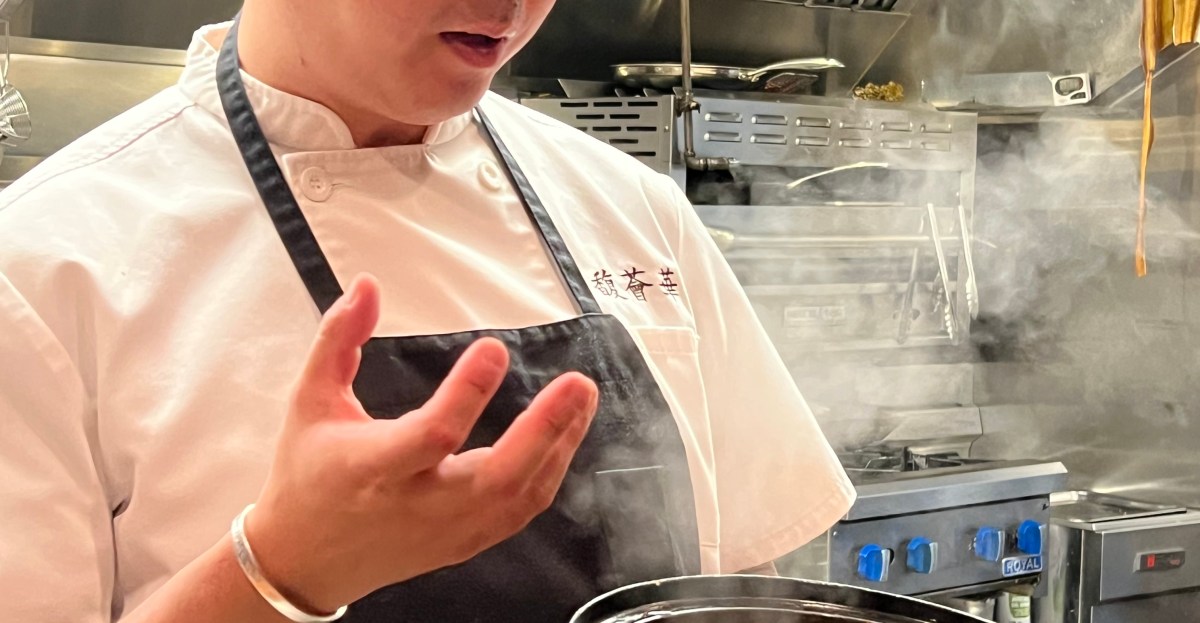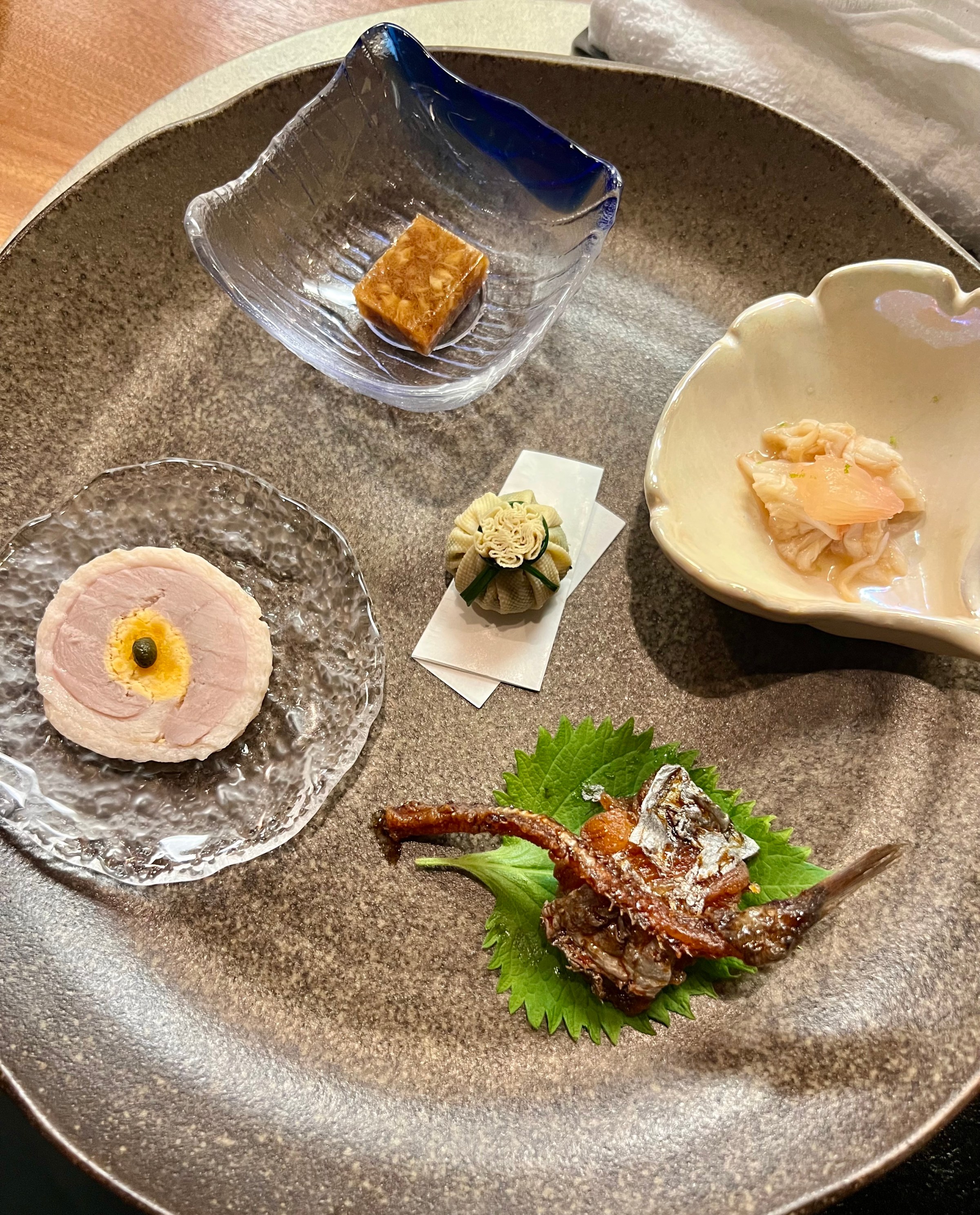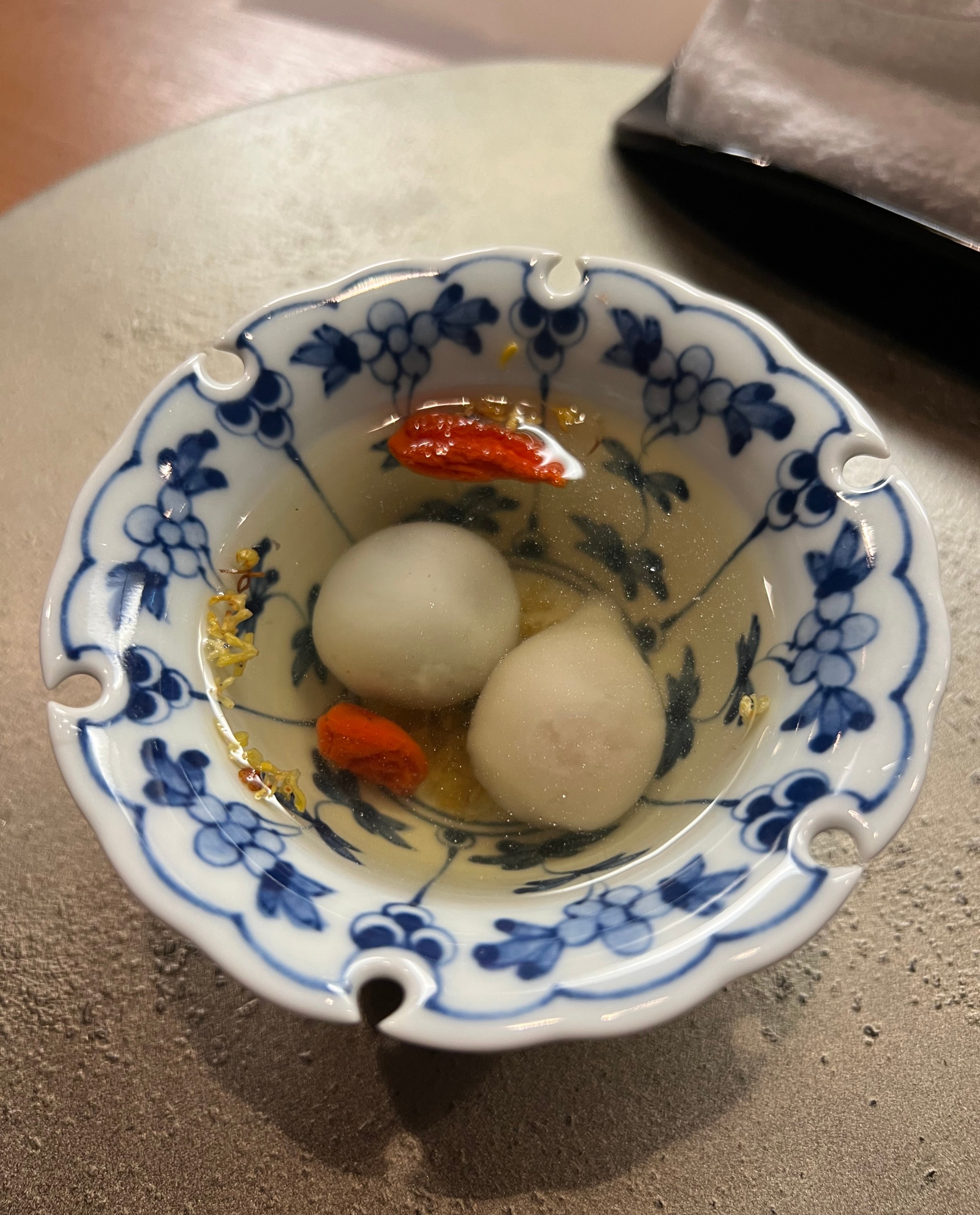There are rare moments of genuine surprise and delight in the post-foodie space of 2025. Sometimes it’s enough to kick passionate diners right off of their In the Mood for Love hazy cloud nine. But then there are restaurants that remind diners of why they started their love affair with the industry in the first place.
Fù Huì Huá in San Francisco is just such an establishment.
The family behind the restaurant came to San Francisco with a coterie of Shanghainese and Hong Kong recipes: Think money bags full of weeds emulating dandelion-like plants growing around Shanghai, smoked fish sauce boiled every day for a year, air-chilled croaker fish, the glutinous rice sweet tanguyan hand-pounded and suspended in sugary syrup. In July 2025, the restaurant opened on Calle 24, a block from Zuckerberg General. It’s just one seating on Wednesdays and Thursdays, two on Fridays, Saturdays, and Sundays. You’ll have a better chance of stepping foot on the moon than eating here. But like traveling to space, it’s a worthwhile ambition.
Paolo Bicchieri
Paolo Bicchieri
The restaurant began as a pop-up inside Yuji’s on Post Street in March 2024. Shooting the breeze with their Korean and Japanese chef buddies, someone told chefs Tao William and Yuezhong Ge that Chinese fine dining would never be taken seriously; maybe San Franciscans would spend $300 for omakase, but not clay pot rice. It started as a joke amongst friends, then the father and son got deadly serious. This, from a chef in his 50s who spent three years working for a yakuza boss in a past life, one whom director Wong Kar-Wai sent his actors for Blossoms Shanghai to learn from, according to William. “We want to focus on Chinese cooking for young chefs,” William says. “They always go Japanese. They go French. [My father] wants to get better and better Chinese cooking in the Bay Area.”
What Fù Huì Huá puts together over the course of four hours is a rarity among Chinese restaurants in the city. Light instrumental music waltzes over the dark restaurant: It was built and designed by the restaurant’s server, an architect by day who happens to be dating William. He speaks on behalf of his father, who quietly watches flames leap around a wok, flitting in and out of the kitchen. Some menus, like one in Mountain View, showcase ten different presentations of crab: Shanghainese hairy crabs from China, Kegani from Hokkaido, Dungeness and blue crabs from San Francisco. At a tasting menu in October, figs battered in panko and served with Wagyu atop shiso — paired with a ketchupy sauce as a nod to Ge’s time in a Tokyo chūka restaurant. There’s a rice porridge oil, as the father and son call it, slow-cooked for five hours with bamboo that’s like a warming champurrado. A hollowed-out lime gets served with its juice reincorporated into a palette cleanser; caviar perches atop a spring roll.
Wagyu comes served atop a perilla leaf and beside fried fig. Paolo Bicchieri
Ge came to San Francisco in 2013. He grew up in Shanghai, going from high school to culinary school to learn Huaiyang cuisine. Also known as Jianghuai, it’s considered one of four great Chinese cuisines, focusing on delicate seasoning, less sauce than you might expect, and intense knife skills. He cut his teeth in luxury Chinese hotels before dotting restaurants throughout Tokyo, including a few literal underground Shinjuku spots. Much later in life he moved to San Francisco to grow his cooking passion. That was 12 years ago: He landed in Chinatown. His first impression was that dim sum and Cantonese food was popular, but that much of the variety of his home country was not represented.
William, for his part, was never formally trained. He learned everything from his father and friends, many of whom are chefs. It happened over time as he always saw the kitchen as the closest thing to a living room for him and his family. Now, he manages the business side of things for his father and mother, who works in the kitchen and chose to remain anonymous, though he is a stunning cook himself. William was born in 1989, then his dad went to Tokyo in 1991 and stayed for a decade. “Mostly people went to Japan undocumented,” William says. “The first time I met my father, I was 12. My mom kept telling me he was a hero making money for us. I always spent time with him in the kitchen when he came back.” William arrived in San Francisco three years after his dad.
From left, chefs Yuezhong Ge and Tao William work the small kitchen. Paolo Bicchieri
Though the younger chefs at San Francisco’s upscale Chinese restaurants may not boast such colorful backgrounds, they’re not slouches. Brandon Jew’s Mr. Jiu’s is a main character, the only Chinese restaurant in the U.S. to hold a Michelin star. From that kitchen sprang forth Franky Ho and Mike Long who, with their respective partners Millie Boonkokua and Lucy Li, opened Four Kings next to a Kumon a few blocks away. The newest contender is chef James Parry’s the Happy Crane, a Hayes Valley restaurant with a serious point of view paired with playful cosmopolitan bites such as the best tofu salad you’ve ever had and hazelnut oozing Ferrero Rocher sesame balls. “They are all really great,” William says. “I appreciate their elevated style to attract more people. We just have different styles. They do more fusion.”
To that end, Fù Huì Huá is the exact restaurant San Francisco should expect in 2025. It was only in 2023 when Bon Appetit bemoaned the state of Bay Area restaurants, citing outrageous rents and staggering income inequality. That’s only gotten worse. But the torrent of AI dollars, a third tech gold rush, means San Francisco is “good” once again. Fù Huì Huá is not a cheap, accessible dinner; four-hour meals that cost $300 are not for the working class. But they’re here to beat the drum of their home country’s cooking and to enrich the local scene with little more than a mission and a tiny restaurant near the hospital.
“We want to provide people with good food and make people feel like they’re coming back home,” William says. “My father is strict: He says cooking is cooking, every day keep the same quality and the same standard.”
Fù Huì Huá (2809 24th Street, San Francisco) is open at 6:30 p.m. Wednesdays and Thursdays and at 5 p.m. and 8 p.m. Fridays through Sundays by reservation only through Tock.
White and black sesame tanguyan, smaller than the kind Ge grew up eating at home. Paolo Bicchieri






